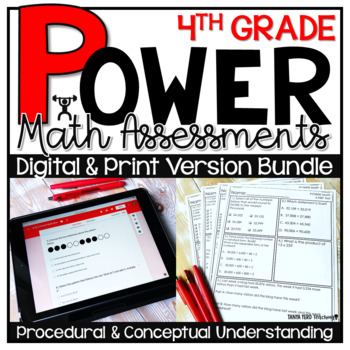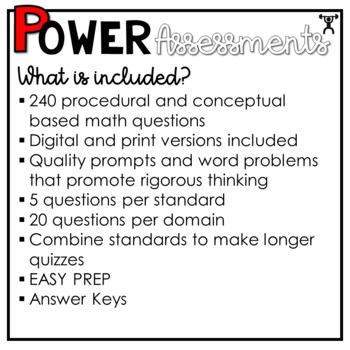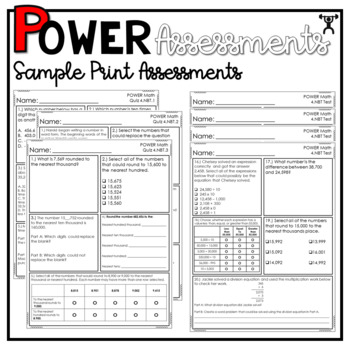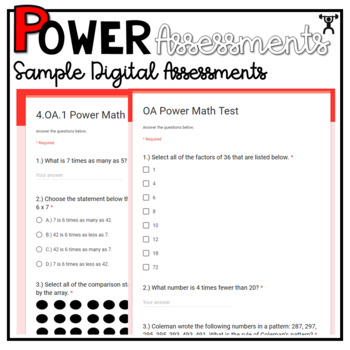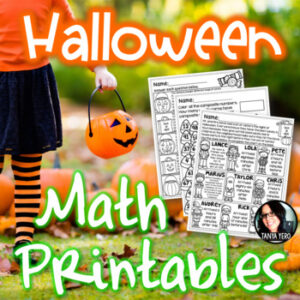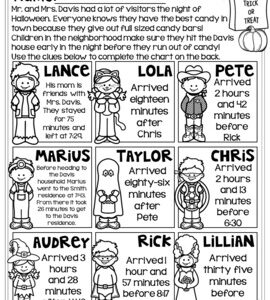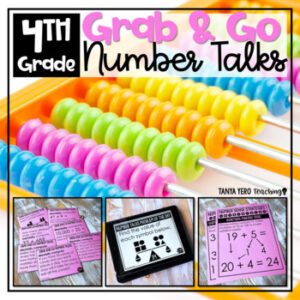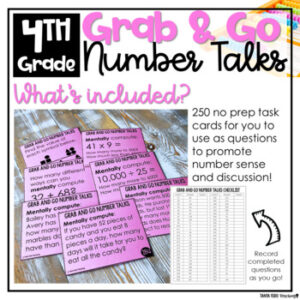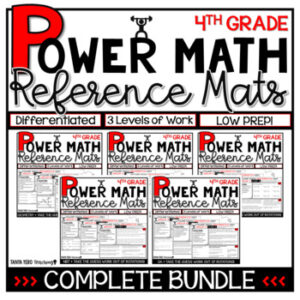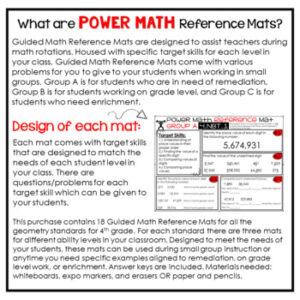Description
Add rigor and deep thinking to your math block with POWER Math Assessments. Designed for all levels of understanding, these assessments have questions that target both procedural and conceptual understanding. There is a 5 question quiz for every standard and a 20 question cumulative test for each math domain. This resource is truly print and go; everything you need for assessment is here!
This BUNDLE includes a print and digital version for each assessment. The digital version is designed for Google Classroom. You and your students must have Google Classroom accounts in order for the assessments to be manually graded.
What’s included in this product?
- 240 procedural and conceptual based math questions
- Digital and print versions
- Quality prompts and word problems that promote rigorous thinking
- Space for showing work and answers
- 5 question quizzes per standard
- Combine standards to make longer quizzes
- 20 question tests per domain
- Easy prep
- Manually grades for you
- EDITABLE! Modify, delete, or add questions to fit the needs of your students with the digital version
- Answer keys
***CHECK OUT OUR BEST SELLING SET OF POWER PROBLEMS.*** CLICK HERE!
Perfect for your math lessons and in class practice.
WHAT ARE P.O.W.E.R PROBLEMS?
PURPOSEFUL – These problems are meant to keep students focused, while strengthening initiative and perseverance.
OPPORTUNITIES – These prompts can be used in a variety of ways. P.O.W.E.R problems can be used to introduce a lesson, spiral review, or as formative assessments.
WITH
ENGAGEMENT – Problems are real world applicable and designed to hook students with interest and presentation. Complexity of problems promotes problem solving skills.
RIGOR – Tasks are specifically designed to challenge students and assess conceptual understanding of curriculum versus procedural understanding. Students will need to apply more than just a “formula.”
WHY USE P.O.W.E.R PROBLEMS?
BUILD STAMINA WITHIN YOUR STUDENTS!
P.O.W.E.R problems are designed to challenge your students with their open ended presentation. Majority of problems that come from textbooks and workbooks assess procedural understanding of curriculum. Some textbooks even provide step by step instructions where the textbook is thinking for the students and taking away that “productive struggle” for children. When we rob students of that event, we rob them of their ability to reason, problem solve, and see beyond a standard algorithm. P.O.W.E.R problems are meant to show students that there are different ways to answer one question in math. With these tasks students take ownership and are part of the problem solving process versus filling in blanks in a textbook.
Standards & Topics Covered:
Number and Operation in Base Ten
➥ 4.NB.1 – Place Value Concepts
➥ 4.NBT.2 – Number Form, Word Form, Expanded Form, and Comparing of whole numbers
➥ 4.NBT.3 – Rounding multi-digit whole numbers
➥ 4.NBT.4 – Adding & Subtracting Whole Numbers
➥ 4.NBT.5 – Multiplying whole numbers
➥ 4.NBT.6 – Dividing whole numbers
Operations & Algebraic Thinking
➥ 4.OA.1 – Interpreting multiplication equations
➥ 4.OA.2 – Multiplying and dividing word problems
➥ 4.OA.3 – Solving multistep word problems, including interpreting remainders
➥ 4.OA.4 – Factors and multiples, Identifying prime and composite numbers within 100
➥ 4.OA.5 – Patterns
Number and Operation – Fractions
➥ 4.NF.1 – Equivalent fractions
➥ 4.NF.2 – Comparing fractions
➥ 4.NF.3 – Adding and subtracting fractions with like denominators, decomposing fractions, adding and subtracting mixed numbers with like denominators
➥ 4.NF. 4 – Multiplying a fraction by a whole number
➥ 4.NF.5 – Adding and subtracting fractions with denominators of 10 and 100
➥ 4.NF.6 – Decimal notation for fractions with denominators of 10 and 100
➥ 4.NF.7 – Comparing decimals to hundredths
Measurement and Data
➥ 4.MD.1 – Measurement and converting measurement with the customary and metric systems of length, weight, mass, liquid volume, and time
➥ 4.MD.2 – Solving measurement word problems
➥ 4.MD.3 – Area and perimeter of rectangles
➥ 4.MD.4 – Line plots
➥ 4.MD.5 – Angles within a circle
➥ 4.MD.6 – Measuring angles with a protractor
➥ 4.MD.7 – Additive angle measurement, decomposing angles
Geometry
➥ 4.G.1 – Identifying points, lines, line segments, rays, angles, perpendicular and parallel lines in 2D shapes
➥ 4.G.2 – Classifying 2D figures, types of triangles
➥ 4.G.3 – Symmetry


